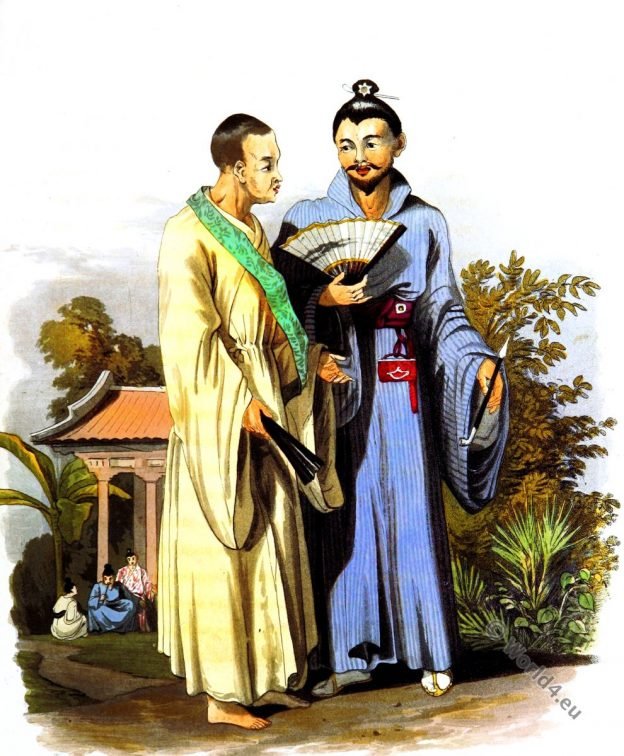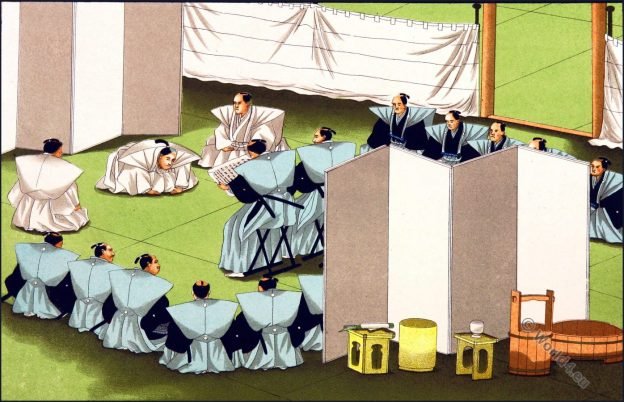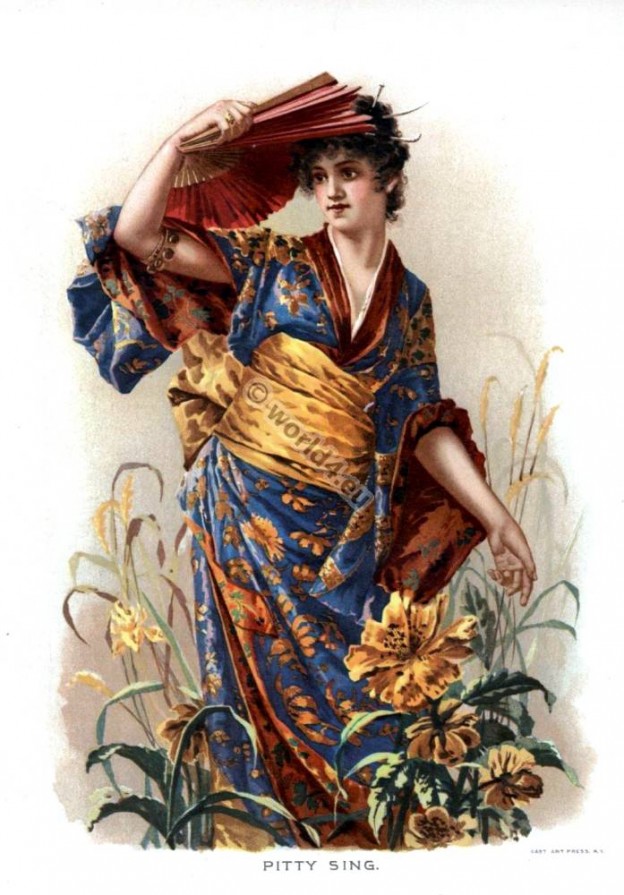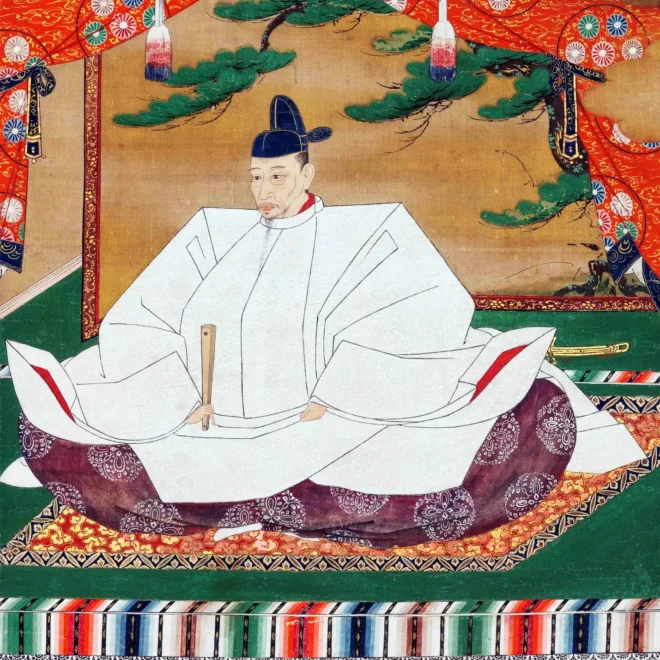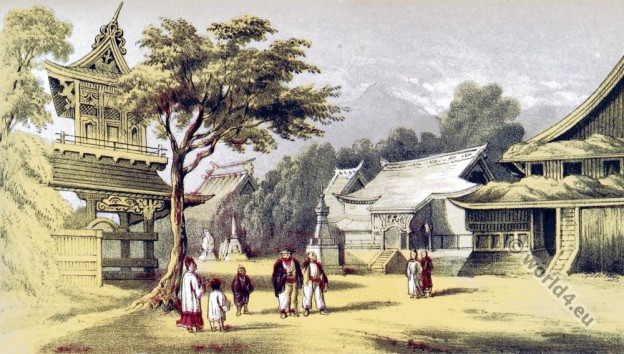Ryukyu Islands. Shō-Dynastie. Known as the Great Loo-Choo Island, Okinawa Japan.
Tag: Japanese theme
Japanese culture, arts and crafts, customs, mythology, religion and everyday life published at the beginning of the 20th century and in the 19th century .
Seppuku, Hara Kiri. Ritualized type of male suicide. Japan Samurai.
The seppuku Hara Kiri (jap. 切腹) is a ritualized type of male suicide, which was spread around the middle of the twelfth century in Japan within the shift of the samurai and was officially banned in 1868.
Okinawa, Japan. Loo Choo Chief and his Two Sons.
Okinawa, Japan. Loo Choo Chief and his Two Sons.
Japanese Festivals and Holidays.
Sketches of Japanese Manners and Customs’ were collected during the years 1864-5, by Jacob Mortimer.
Gentleman of Loo Choo in his Cloak. Japan 1816.
Gentleman of Loo Choo in his Cloak
Japan. Warlike Equipment of an old Japanese Archer.
On our board we reproduce in miniature an original Japanese picture showing the different phases of the clothing and equipment of an archer on foot. The picture seems to belong to the XVth century. In the 19th century the Japanese army was uniformed according to the European pattern.
Pitti-Sing. Victorian opera character.
Pitti-Sing. The Mikado. Victorian opera character. The Mikado is a comic opera in two acts by Gilbert and Sullivan (libretto by WS Gilbert, with music by Arthur Sullivan).
Toyotomi Hideyoshi. Japanese military leader 16th century.
Toyotomi Hideyoshi (1537-1598) japanese warlord, feudal lord and court noble
A Japanese sailing ship off the coast of Shimoda.
Two journeys to Japan. 1856-7, by Kinahan Cornwallis.
A Buddhist Temple at Nagasaki. Journeys to Japan 1856.
A Buddhist Temple at Nagasaki, Japan 1857. Source: Two journeys to Japan. 1856-7, by Kinahan Cornwallis. Illustrated by the author. Published by Thomas Cautley Newby. London 1859.

